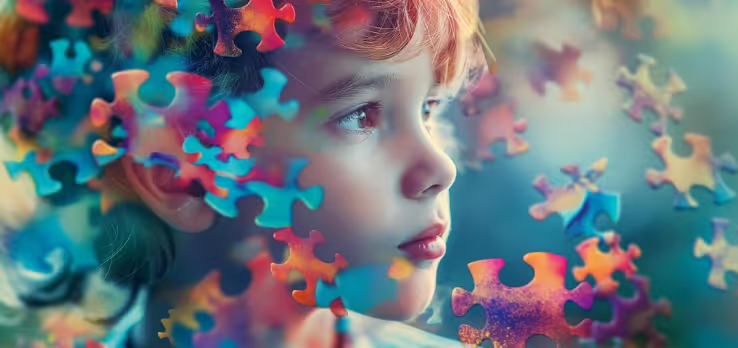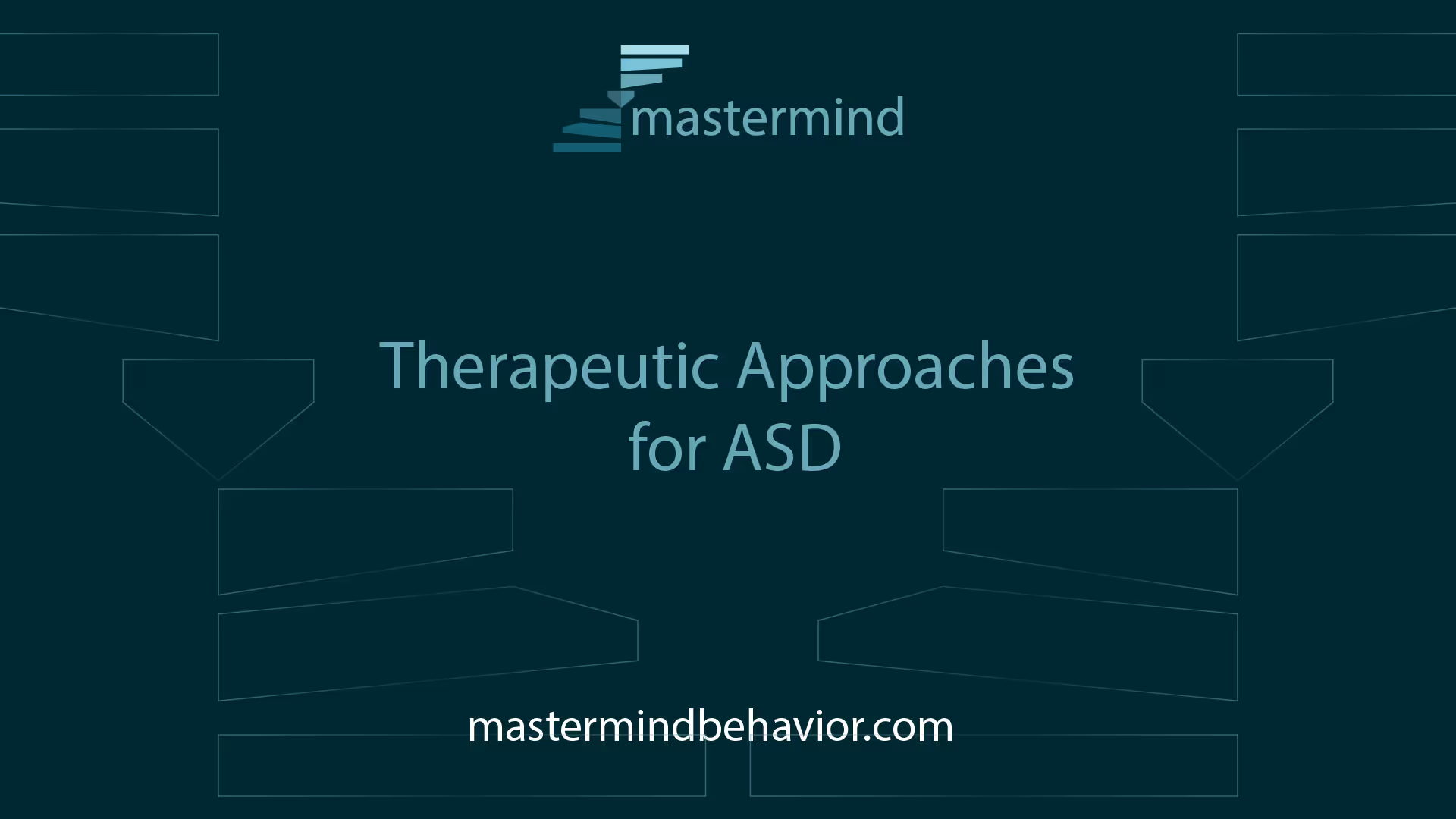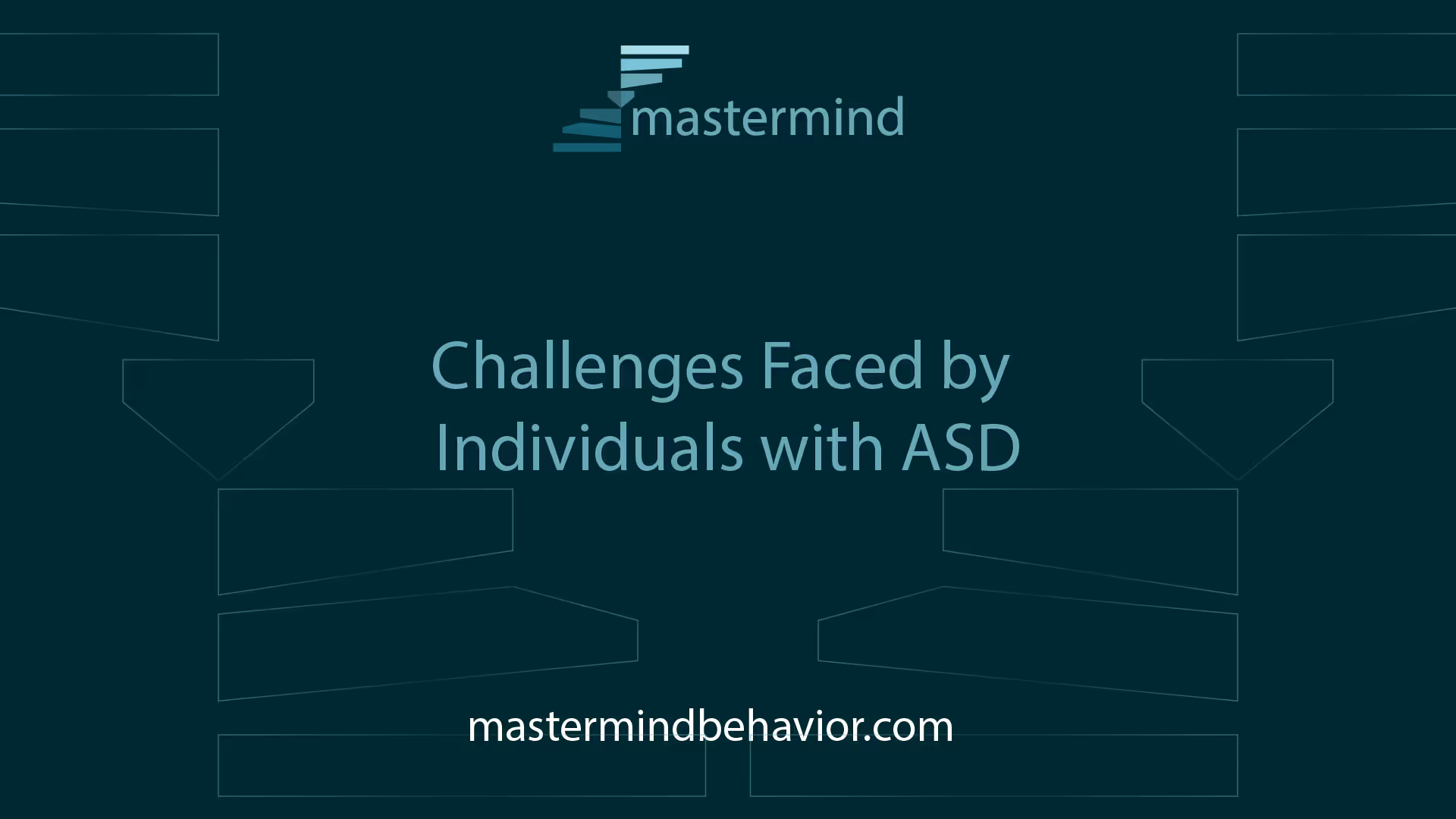What Are The Needs of A Person With Autism

Understanding Autism Spectrum Disorder

Autism Spectrum Disorder (ASD) is a complex developmental condition that affects individuals in various ways. To support individuals with autism effectively, it's crucial to understand its characteristics and prevalence.
Characteristics of ASD
Individuals with ASD commonly experience challenges in social communication and interaction. They may also exhibit restricted or repetitive behaviors or interests. These characteristics can present significant challenges in daily life [1].
- Social Communication and Interaction:
- Difficulties in verbal and non-verbal communication.
- Challenges in understanding social cues.
- Struggles with empathy and forming meaningful relationships.
- Reliance on routines and rituals to create predictability and reduce anxiety.
- Restricted or Repetitive Behaviors:
- Repetitive movements or speech patterns.
- Intense focus on specific interests.
- Resistance to changes in routine.
- Sensory sensitivities to sounds, lights, or textures.
These characteristics can affect various aspects of life, including schooling, employment, and social relationships. For more information on how these challenges impact individuals, visit our section on social interaction difficulties.
Prevalence of ASD
According to the Centers for Disease Control and Prevention (CDC), approximately 1 in 36 children is diagnosed with ASD in the United States [1]. This statistic highlights the increasing prevalence of ASD and underscores the importance of equipping educators and caregivers with the necessary skills and knowledge to support individuals with autism.
The rising prevalence of ASD signifies a growing need for effective therapeutic approaches and individualized treatment plans. For additional insights into therapeutic methods, explore our section on Applied Behavior Analysis (ABA) Therapy.
Understanding the characteristics and prevalence of ASD is fundamental in identifying what are the needs of a person with autism. By doing so, we can work towards creating a more inclusive and supportive environment for individuals with autism.
Therapeutic Approaches for ASD

Understanding the therapeutic approaches available for Autism Spectrum Disorder (ASD) is crucial in meeting the needs of individuals with autism. Here, we delve into three prominent therapies: Applied Behavior Analysis (ABA), Cognitive Behavioral Therapy (CBT), and Occupational Therapy.
Applied Behavior Analysis (ABA) Therapy
Applied Behavior Analysis (ABA) therapy is widely regarded as the gold standard in autism treatment [2]. ABA therapy addresses a broad range of skills, from communication and socialization to reducing challenging behaviors. By employing data-driven approaches, ABA therapy aims to teach new skills and reduce problem behaviors, making it highly individualized.
Key Components of ABA Therapy:
- Behavioral Interventions: Techniques like positive reinforcement to encourage desired behaviors.
- Data Collection: Continuous monitoring of progress to tailor interventions.
- Skill Development: Focuses on communication, social skills, and daily living skills.
For more information on the role of ABA therapists, visit our article on what do aba therapists do.
Cognitive Behavioral Therapy (CBT)
Cognitive Behavioral Therapy (CBT) can be beneficial for individuals with autism who experience anxiety, obsessive behaviors, or depression [2]. CBT equips individuals with practical tools to manage emotions, reduce anxiety levels, and develop coping strategies. The structured approach of CBT helps in teaching emotional regulation and improving behavior.
Key Components of CBT:
- Emotional Regulation: Techniques to identify and manage emotions.
- Coping Strategies: Practical methods to handle stress and anxiety.
- Behavioral Strategies: Structured interventions to modify negative behaviors.
For more insights on CBT and its applications, explore our article on aba therapy for adhd.
Occupational Therapy
Occupational therapy is valuable for individuals with autism who struggle with sensory processing disorder, fine and gross motor skills, and activities of daily living [2]. This therapy works to enhance independence and overall quality of life.
Key Components of Occupational Therapy:
- Sensory Integration: Techniques to help manage sensory sensitivities.
- Motor Skills Development: Activities to improve fine and gross motor skills.
- Daily Living Skills: Training in tasks like dressing, eating, and grooming.
For more details on how to implement these therapies, check out our article on aba therapy training for parents.
Each of these therapeutic approaches plays a significant role in meeting what is the need of a person with autism. By understanding and utilizing these therapies, caregivers and professionals can empower individuals with autism to thrive in various aspects of life.
Individualized Treatment Plans
Creating effective treatment plans for individuals with Autism Spectrum Disorder (ASD) is crucial for addressing their unique needs and promoting their overall growth. This process involves a thorough assessment and the customization of therapies to suit each individual's requirements.
Assessment Process
The assessment process is the foundation of developing successful treatment plans for individuals with autism. It involves a comprehensive evaluation to understand the individual's strengths, weaknesses, and specific goals. This initial step ensures that the chosen therapy aligns with the unique needs of the person with autism, leading to better outcomes.
During the assessment, professionals may conduct various tests and observations to gather detailed information about the individual's behavior, communication skills, cognitive abilities, and sensory sensitivities. This data helps in identifying the areas that require targeted intervention. Sensory sensitivities, for instance, are common in individuals with autism and can significantly impact daily activities and interactions.
Tailoring Therapy to Needs
Once the assessment is complete, the next step involves tailoring therapy to meet the specific needs of the individual. This personalization is vital for achieving meaningful progress and enhancing the individual's quality of life. Various therapeutic approaches, such as Applied Behavior Analysis (ABA) therapy, [Cognitive Behavioral Therapy (CBT)], and [Occupational Therapy], can be utilized to address different aspects of autism.
ABA therapy, for example, focuses on improving social skills, communication, and adaptive behaviors through positive reinforcement. The therapy plan is customized based on the individual's assessment results, ensuring that the interventions are relevant and effective.
In addition to the primary therapy, incorporating family participation is crucial for fostering positive progress. Families play a significant role in reinforcing the therapy at home and providing consistent support. Training parents through ABA therapy training for parents can empower them to effectively contribute to their child's development.
For individuals with sensory sensitivities, creating an autism-friendly environment can further support their growth. Modifying the environment to reduce sensory overload and implementing consistency in changes can significantly impact their well-being [4].
By understanding the assessment process and the importance of tailoring therapy, caregivers and professionals can better address what are the needs of a person with autism and help them thrive. For more information on related topics, explore our articles on aba therapy near me that accepts medicaid and aba therapy for adhd.
Challenges Faced by Individuals with ASD

Individuals with Autism Spectrum Disorder (ASD) encounter various challenges that can significantly impact their daily lives. Understanding these challenges is crucial for developing effective strategies to support their growth and well-being. Two primary challenges faced by individuals with ASD are social interaction difficulties and sensory sensitivities.
Social Interaction Difficulties
Social interaction difficulties are a hallmark of ASD. Individuals with autism often rely on routines and rituals to create predictability and reduce anxiety, which can limit flexibility and spontaneous interactions [1]. These challenges can manifest in various ways:
- Difficulty understanding social cues, such as facial expressions or body language
- Struggle to initiate or maintain conversations
- Preference for solitary activities over group interactions
- Limited eye contact or unusual speech patterns
These social challenges can lead to significant issues, including social isolation, bullying, and mental health problems. Addressing these concerns is essential for fostering an inclusive and supportive environment for individuals with ASD. Effective interventions, such as Applied Behavior Analysis (ABA) Therapy, can help improve social skills and reduce anxiety associated with social interactions.
Sensory Sensitivities
Sensory sensitivities are common in individuals with autism and can significantly impact their daily life activities and interactions. Some individuals may be hypersensitive (over-sensitive) to sensory input, while others may be hyposensitive (under-sensitive). These sensitivities can affect various senses, including touch, taste, sound, smell, or sight.
Sensory sensitivities can lead to sensory overload and potential meltdowns, impacting routines and relationships. Individuals with autism may exhibit behaviors such as covering ears, avoiding certain textures or foods, being sensitive to bright lights or loud noises, or experiencing challenges with personal grooming or hygiene routines.
Addressing sensory-related concerns is vital for creating a nurturing and supportive environment. Environmental modifications, such as reducing sensory stimuli and providing sensory-friendly spaces, can help individuals with autism manage their sensitivities effectively. For more information on creating autism-friendly environments, visit our article on the impact of environments on autism.
By understanding and addressing the social interaction difficulties and sensory sensitivities faced by individuals with ASD, caregivers and professionals can better support their development and well-being. Tailored therapeutic approaches, such as ABA therapy, can be instrumental in meeting the unique needs of individuals with autism.
Creating Autism-Friendly Environments
Creating an environment that caters to the unique needs of individuals with Autism Spectrum Disorder (ASD) is crucial for their well-being and development. This section discusses the impact of environment modifications and the importance of consistency in environmental changes.
Impact of Environment Modifications
Modifying the environment can significantly improve the quality of life for individuals with autism. Sensory sensitivities are common in individuals with autism and can affect various senses, including touch, taste, sound, smell, or sight. For instance, people with autism may have heightened auditory sensitivity, making certain sounds overwhelming [5]. Similarly, lighting, color schemes, and clutter levels can notably impact their comfort and behavior.
Modifying these factors helps to create a more supportive environment, reducing the risk of sensory overload and potential meltdowns [3]. For example, dimming lights, reducing background noise, and choosing appropriate colors can make a significant difference.
Consistency in Environmental Changes
Consistency is key when it comes to environmental modifications for individuals with autism. Abrupt changes can be unsettling and may exacerbate anxiety or sensory sensitivities. Establishing a consistent environment helps individuals with autism feel more secure and can improve their ability to adapt to their surroundings.
For consistency, it is important to:
- Maintain Stable Routines: Keeping a predictable daily schedule helps individuals with autism manage their expectations and reduces anxiety.
- Use Consistent Visual Aids: Visual schedules or cues can provide clarity and support transitions between activities.
- Implement Gradual Changes: When modifications are necessary, introduce them slowly to allow time for adjustment.
- Coordinate Across Settings: Ensure that modifications at home, school, and therapy settings are aligned to provide a cohesive experience.
By focusing on consistency, caregivers and educators can help individuals with autism navigate their environments more comfortably and confidently. This approach aligns with the principles of Applied Behavior Analysis (ABA) therapy, which emphasizes structured and predictable environments to support learning and development.
For parents seeking guidance on how to implement these strategies, resources such as ABA therapy training for parents can be invaluable. Additionally, exploring nearby services through ABA therapy near me that accepts Medicaid can provide further support.
Understanding and addressing what are the needs of a person with autism through environmental modifications and consistency can empower individuals with autism to thrive in various settings.
Communication Strategies for Autism
Effective communication strategies are essential for meeting the needs of individuals with autism. Understanding both verbal and non-verbal communication methods, as well as Augmentative and Alternative Communication (AAC) tools, can significantly enhance their ability to interact with others.
Verbal and Non-Verbal Communication
Autistic individuals may face challenges in both verbal and non-verbal communication, making it difficult to understand and interpret social cues, gestures, and facial expressions [3]. This can include difficulties with understanding tone of voice, humor, sarcasm, and idiomatic expressions.
Common non-verbal communication methods used by autistic individuals include:
- Gestures
- Crying
- Taking your hand to the desired object
- Looking at or reaching for the desired object
- Using pictures
- Distressed behavior
- Echolalia (repetition of others' words)
Strategies to Support Communication Development
Several strategies can support communication development in autistic individuals (National Autistic Society):
- Following their lead
- Using expansions in communication
- Building in time for communication
- Being face-to-face
- Imitating their actions and words
- Using gestures and visual supports
- Incorporating songs and role play
- Providing feedback
- Giving a reason to communicate
- Finding opportunities to interact
Augmentative and Alternative Communication (AAC)
AAC supports are beneficial for autistic individuals who have limited or no spoken language. These tools help facilitate social-communicative interactions [7].
Common AAC tools include:
- Picture Exchange Communication System (PECS)
- Sign language
- Communication boards
- Voice output communication aids
Understanding and implementing these communication strategies can play a crucial role in improving the social interactions and overall quality of life for individuals with autism. For more detailed information on ABA therapy and its benefits, visit our article on what do aba therapists do.
References
[1]: https://educationonline.ku.edu/community/social-difficulties-in-autism-spectrum-disorder
[2]: https://www.empowerbh.com/blog/common-types-of-therapy-for-autism/
[3]: https://www.abtaba.com/blog/how-autism-affects-daily-life
[4]: https://www.autism.org.uk/advice-and-guidance/topics/sensory-differences/sensory-differences/all-audiences
[5]: https://livingautism.com/create-autism-friendly-environment/
[6]: https://abacentersfl.com/blog/the-impact-of-environments-on-autism/
[7]: https://www.autism.org.uk/advice-and-guidance/topics/communication/understanding-and-developing-communication
Recent articles

How Early Intervention Can Improve Outcomes for Children with Autism
Unlocking Potential: The Impact of Early Autism Intervention

How ABA Therapy Supports Children in Developing Flexibility and Adaptability
Empowering Independence: How ABA Therapy Nurtures Growth and Change

How Caregiver Education Empowers Families of Children with Autism
Unleashing the Power of Knowledge: Transforming Lives of Families with Autism

The Role of Functional Behavior Assessments in Identifying Triggers and Solutions
Unveiling the Mechanism Behind Effective Behavioral Strategies

How ABA Therapy Helps Build Confidence and Self-Esteem
Unleashing Potential: ABA Therapy's Role in Boosting Confidence

The Role of Data-Driven Decisions in ABA Therapy Success
Harnessing Data for Personalized ABA Therapy


